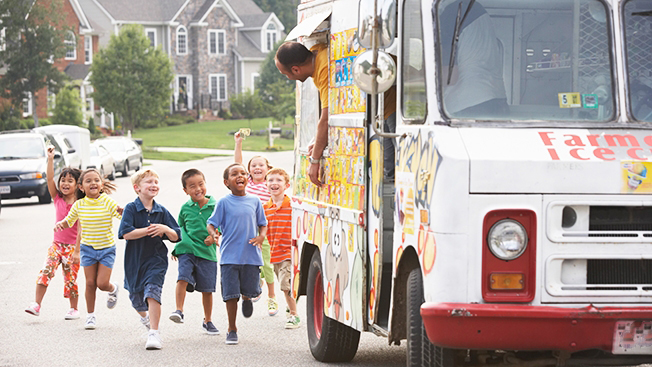History of Ice Cream Trucks
Remember those hot summer days as a kid?
The cheerful jingle of an ice cream truck rolling down a neighborhood street is a nostalgic sound that instantly conjures memories of summer days, childhood excitement, and sweet indulgences. But beyond the joy they bring, ice cream trucks have a fascinating history that spans more than a century, evolving alongside American culture and technology.
Origins: From Pushcarts to Motorized Treats
The concept of mobile ice cream vendors dates back to the 1800s, when Italian immigrants in cities like New York began selling scoops from pushcarts. These vendors, known as “hokey pokey men” (named after their chant, “O che poco!” or “Oh how little!”), sold penny licks—small servings of ice cream in glass cups that customers licked and returned. Sanitation concerns eventually led to the invention of the edible ice cream cone, which paved the way for safer and more appealing mobile sales.
As motor vehicles became more common in the early 20th century, so did the idea of using them for mobile vending. Refrigeration technology was improving, and by the 1920s and ’30s, trucks equipped with coolers and dry ice began to appear, allowing for wider distribution and longer hours of operation.
The Golden Age: Post-War Boom and American Suburbia
The true explosion of the ice cream truck industry came after World War II. With suburban neighborhoods expanding and consumer culture booming, entrepreneurs saw an opportunity. In 1956, the Mister Softee company was founded in Philadelphia, and its iconic blue-and-white trucks, soft-serve offerings, and jingle (composed by Les Waas) quickly became an American institution.
This era also saw the rise of Good Humor trucks, which had been operating since the 1920s but gained mass popularity in the postwar years. Good Humor men wore crisp white uniforms, rang handbells, and served treats from trucks with freezers powered by gasoline-powered generators.
The combination of growing suburbs, better roads, and baby boom families created an ideal environment for the ice cream truck to thrive. It wasn’t just about selling ice cream—it was about delivering delight directly to the community.
Modernization and Challenges
By the 1980s and ’90s, the ice cream truck industry began facing new challenges. Rising fuel costs, stricter health and safety regulations, and increased competition from supermarkets and convenience stores affected profitability. Additionally, some communities raised concerns over noise and safety, leading to restrictions on operating hours and music volume.
Still, innovation persisted. Some vendors began offering a wider variety of treats, including pre-packaged novelty items, frozen beverages, and even savory snacks. Trucks were outfitted with more efficient refrigeration systems and eye-catching designs.
In recent years, some modern ice cream trucks have integrated digital payment systems, GPS-based tracking apps for customers, and eco-friendly electric or hybrid engines. There’s even a growing market for gourmet and artisanal ice cream trucks serving everything from dairy-free pops to nitrogen-chilled creations.
Cultural Legacy
Ice cream trucks have become more than just mobile dessert vendors—they are woven into the cultural fabric. They appear in movies, music, and memories. From Mister Softee’s signature tune to the sight of kids running barefoot down driveways with pocket change in hand, the ice cream truck is a symbol of carefree joy.
Today, while their numbers may have declined in some areas, ice cream trucks continue to roll on, evolving with the times while preserving a slice of classic Americana.
Conclusion
The history of the ice cream truck is a story of innovation, nostalgia, and community. From humble pushcarts to digital-age dessert wagons, these vehicles have traveled not just through neighborhoods, but through generations—reminding us that sometimes, the simplest pleasures are the most enduring.

